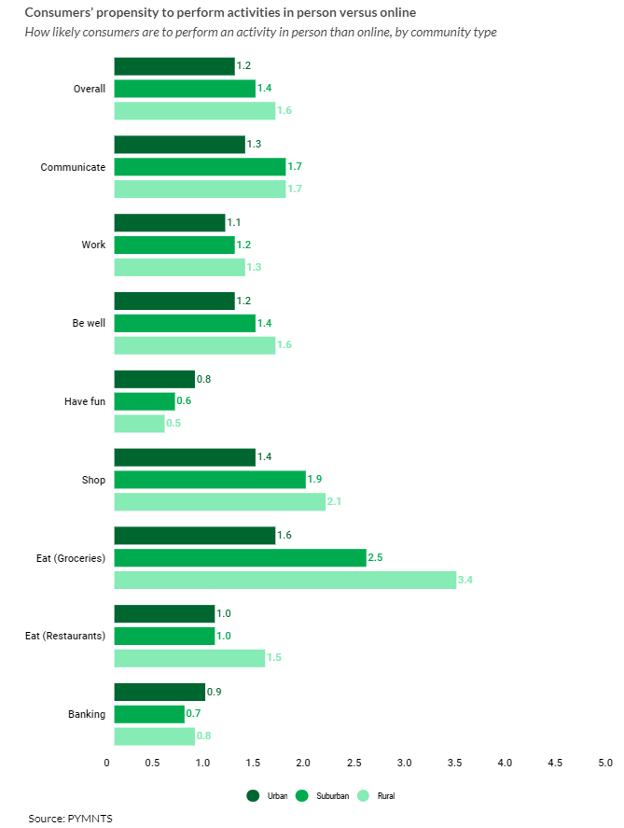
The use of digital health and wellness tools has become increasingly important, proving particularly crucial in rural areas with limited brick-and-mortar healthcare facilities. Despite this, rural consumers are trailing behind their urban counterparts in embracing these digital solutions.
In The “ConnectedEconomy™ Monthly Report: The Urban-Rural Health Divide Edition,” PYMNTS Intelligence draws insights from a survey of about 2,500 United States consumers to learn how they use digital healthcare tools in their daily lives and determine the drivers behind the growing gap in digital healthcare participation among rural and urban consumers.
Findings captured in the PYMNTS Intelligence study show that urban consumers are three times more likely to use health and wellness-related sites, apps and platforms compared to rural consumers. City dwellers also show an 8.9% year-over-year increase in their use of these tools, while rural consumers’ usage remains relatively unchanged. This disparity highlights the expanding divide in digital healthcare participation between the two groups, per the report.
Further data suggests that rural consumers exhibit a stronger tendency to perform activities in person, reflecting a broader preference for in-person interactions over online. On average, rural consumers are 1.6 times more prone to doing activities in person rather than online, while urban consumers are just 1.2 times more likely to choose in-person activities over online.

This trend holds true for health and wellness activities, which rural consumers are 1.6 times more inclined to handle in person than online, compared to urban consumers, who are 1.2 times more likely to opt for in-person healthcare engagement.
The most significant difference lies in the way consumers approach grocery shopping. Those living in rural areas are 3.4 times more likely to do it in person than online. Meanwhile, city dwellers are just 1.6 times more likely to pick groceries in person than they are to do so online.
Urban consumers also dominate in the adoption of digital mental health and pharmacy services. They are four times more likely to use mental health apps, websites or teletherapy sessions compared to rural consumers, while rural consumers’ participation in digital healthcare activities has decreased in seven out of nine categories surveyed.
Overall, the urban-rural divide in digital healthcare engagement is a concerning trend that has implications for the accessibility and quality of healthcare for rural consumers. While digital tools have the potential to address the limitations faced by rural communities, there is a need to bridge the gap in adoption and usage.
As the study noted, efforts should focus on improving digital infrastructure, raising awareness about the benefits of digital health and wellness tools, and providing training and support to rural consumers to ensure equitable access to healthcare services.